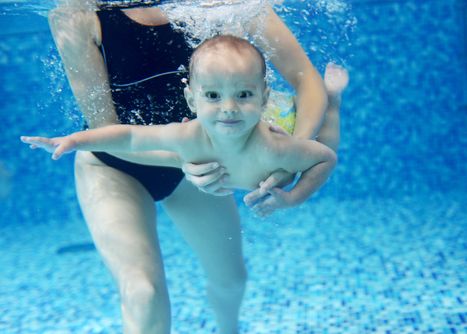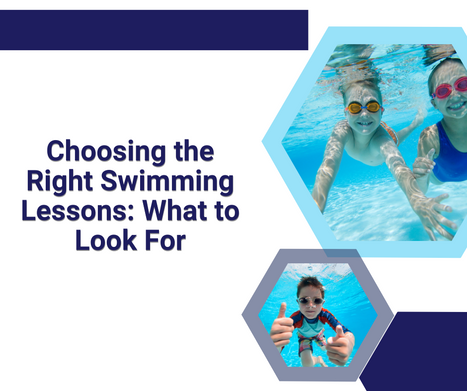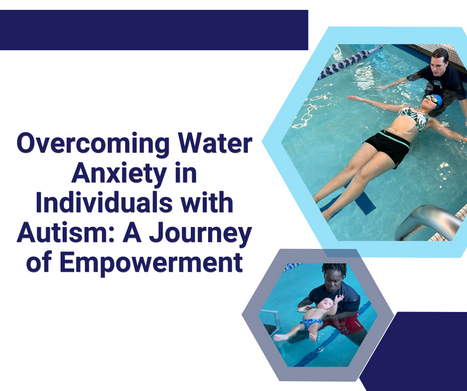Blog
Bond With Your Baby: Bring Your Baby to Swim Lessons at Hudson Valley Swim
There’s something truly magical about the moment a baby experiences water for the first time— floating in their parent’s arms, feeling the warmth of the indoor heated pool, and giggling as they splash around. At Hudson Valley Swim, we believe that swimming isn’t just a life skill; it’s a bonding experience that strengthens the connection between parents and their little ones while providing incredible cognitive and emotional benefits for babies.
Creating Lasting Memories Through Water
From the moment parents step into the warm, welcoming environment of our indoor heated pools, they are met with an experience designed to foster trust, comfort, and joy. Water has a naturally soothing effect, and when parents hold their babies close in the pool, it creates a deep sense of security. This bonding moment is more than just fun—it lays the foundation for a lifelong relationship of trust and communication.
At Hudson Valley Swim, we encourage parents to actively engage in the learning process. By holding their baby, maintaining eye contact, and speaking reassuring words, parents become their child’s first swim instructor. This shared experience strengthens the parent-child bond, creating a sense of teamwork and mutual confidence that extends beyond the water.
moreWhy Hudson Valley Swim is the Best Choice for Your Little Swimmer
When it comes to introducing your child to the water, finding the right swim school is essential. At Hudson Valley Swim, we specialize in swim lessons for all ages and all swimming levels. Our baby swim classes and our toddler swim classes provide a safe, fun, and effective way for young children to develop confidence in the water. Located at indoor heated pools, our small class sizes, and expert trainers offer the best learning environment for your little swimmer.
Water Safety Matters: Start Swim Lessons Early
Did you know that it only takes 20 seconds for a child to drown? Water safety is a crucial skill that all children should learn as early as possible. The American Academy of Pediatrics (AAP) recommends that children start swim lessons by age one to help prevent drowning and build essential water survival skills. At Hudson Valley Swim, we create a fun and supportive environment where even the youngest swimmers can learn to feel comfortable and safe in the water.
The Benefits of Baby & Toddler Swim Classes
Enrolling your child in baby swim classes or toddler swim classes isn’t just about having fun—it’s about building vital water safety skills. Early swim lessons help children develop comfort and independence in the water while improving coordination and cognitive development. Our specialized programs focus on gentle water introduction, breath control, floating, and basic stroke techniques tailored to each child’s age and ability.
moreISR vs. Learn-to-Swim
Sean Arroyo, Hudson Valley Swim National Aquatics Director
Upon first hearing about the ISR program many years ago, I must admit that I was intrigued. After all, watching the videos of infants being thrown into the water completely clothed, and then watching them roll onto their back to float and then cry, I thought to myself that this was remarkable. I even investigated getting certified immediately! After researching the subject, I discovered there was not much of a market for ISR in NY, so I decided not to pursue it.
Over time I encountered a few alumni of ISR, and my observations are for starters that the program works! These babies do know how to roll onto their backs almost immediately upon getting their face wet. With them on their backs they then begin to scream and cry so that an adult is alerted as designed. This was great except when I tried to show them other skills, I could not get them to relax and stop crying. In fact, they wanted to get out so quickly I did not have the chance to even play or teach any other skills. This was true with each of the alumni of the program that came to me for lessons. Each child was very fearful of the water.
ISR is a hard water introduction while at Hudson Valley Swim, our infant program is a soft introduction to the water. We understand the importance of creating a fun and safe learning environment for all our little swimmers. We use songs and well thought out organized games and activities geared toward getting each child comfortable with the water. This also helps moms and dads during tubby time at home. We do focus on submersion and getting the little ones to roll over and float on their backs, but we do so in a more nurturing way; one that builds confidence and helps them develop a fun and safe relationship with the water. This is more conducive to learning the skills they need to keep themselves safe and to give parents peace of mind.
moreChoosing the Right Swimming Lessons: What to Look For
Swimming is an invaluable skill that offers a multitude of benefits. Whether you're a parent seeking lessons for your child or an adult eager to acquire this essential skill, finding the right swimming lesson program is a pivotal decision. Here are some key factors to consider when selecting swimming lessons to ensure a safe, effective, and enjoyable learning experience.
1. Experienced Instructors: The expertise of the instructors is perhaps the most critical aspect of any swimming lesson program. Experienced instructors possess the knowledge and skills to teach swimming techniques effectively, tailor lessons to different skill levels, and ensure the safety of all participants.
2. Small Class Sizes: It is no secret that having smaller classes in any educational environment is most conducive to learning. This is especially true for swimming lessons. Repetition is critical and if there is only a few minutes of one-on-one time with an instructor, progress will take a long time unless class sizes are minimized.
3. Structured Curriculum: Whether you're a beginner or looking to improve your existing skills, the lessons should be organized in a logical sequence that gradually builds upon foundational techniques. A comprehensive curriculum should cover water safety, basic strokes, breathing techniques, and advanced skills as you progress.
moreDiving into Development: The Benefits of Infant Swimming Lessons
When it comes to nurturing a child's physical and cognitive development, parents are always on the lookout for activities that offer a holistic approach. One such activity that has gained significant attention in recent years is infant swimming lessons. Far from being a mere recreational activity, these lessons can be a game-changer for your child's growth and well-being. We will help you debunk common misconceptions, and provide insights into how early aquatic exposure can set the stage for a lifetime of health and confidence.
1. Water Safety Skills from the Start: Drowning is a leading cause of accidental deaths among young children. Infant swimming lessons lay the foundation for water safety awareness, teaching even the tiniest learners how to hold their breath, turn over on their back to float, and move around in the water. These essential skills can significantly reduce the risk of water-related accidents and empower children to react effectively if they find themselves in a precarious situation.
2. Developmental Milestones Acceleration: Infant swimming isn't just about splashing around; it's a comprehensive developmental activity. The gentle resistance of water enhances motor skills and sensory experiences, contributing to better balance and spatial awareness. Early aquatic exposure can potentially expedite milestones like crawling, walking, and even early speech development.
moreExploring the World of Multi-Franchise Ownership: A Journey of Diversification and Success
In the dynamic realm of business ownership, one path that stands out is that of the multi-franchise owner. The term itself carries an air of significance, hinting at a venture that involves more than just overseeing a single business. But what exactly does it mean to be a multi-franchise owner?
Multi-Franchise Ownership. At its core, multi-franchise ownership entails the management and operation of multiple franchises under a single umbrella. Picture this: a savvy entrepreneur who doesn't merely run a solitary location but instead strategically expands their portfolio to encompass various branches of the same brand across different locations.
Diversification Beyond Measure: The allure of multi-franchise ownership starts with diversification. Unlike the conventional entrepreneurial journey where all eggs might be in one basket, this route offers the luxury of spreading risk across multiple baskets. Each franchise location becomes a distinct revenue stream, allowing for a more resilient business model that can weather economic fluctuations and changes in local markets.
Mastering the Art of Brand Consistency: Multi-franchise ownership doesn't just involve managing several businesses; it's about nurturing a consistent brand identity across every location. Imagine walking into any of these franchises and experiencing the same quality of products, services, and customer interactions. Maintaining this brand consistency demands an acute attention to detail and a commitment to upholding the standards set by the franchisor.
more
Embracing the International Franchise Association (IFA): The Pathway to a Business Community
For entrepreneurs and businesses seeking to expand their horizons and tap into new markets, franchising has proven to be a potent strategy. Navigating the complex world of franchising requires more than just a business idea; it demands a deep understanding of the industry's dynamics, best practices, and networking opportunities. This is where the International Franchise Association (IFA) steps in as a beacon of learning, community, and webinars.
We'll be at #FranchiseExpoSouth with @MFVExpositions September 8 - 9! Visit us to learn about a Hudson Valley Swim business opportunity at booth 210 # Register for FREE today with HUDSON https://bit.ly/42FA1B8
The IFA brings together a diverse community of franchisors, franchisees, suppliers, and professionals who are committed to upholding the highest standards in franchising.
One of the prime advantages of IFA membership lies in its commitment to continuous learning. The IFA organizes seminars, workshops, conferences, and training programs that cover a wide range of topics. From legal and financial aspects to marketing and operational excellence, these learning opportunities equip members with the knowledge needed to navigate the intricate landscape of franchising.
moreWater Confidence: Dive In and Overcome Your Fear!
For some individuals, water can also be a source of fear and anxiety. This fear, known as aquaphobia, can restrict people from fully enjoying water-related activities and experiences. We will delve into the concept of water confidence and explore effective strategies to overcome the fear of water.
Understanding Aquaphobia: Aquaphobia is a common fear that affects many individuals, young and old alike. It can stem from various causes, such as a traumatic water-related incident, a lack of exposure to water during childhood, or even hearing about the negative experiences of others. The fear can manifest in different ways, ranging from mild unease and discomfort to severe panic attacks when in or near water. However, the good news is that with the right mindset and approach, aquaphobia can be overcome.
Building Water Confidence:
Knowledge is Power: Educate Yourself. One effective strategy to combat aquaphobia is to gather knowledge about water-related activities, safety measures, and swimming techniques. Understanding how water behaves, the buoyancy it provides, and the basic principles of swimming can help demystify the unknown and build your confidence.
more
Overcoming Water Anxiety in Individuals with Autism: A Journey of Empowerment
For many individuals on the autism spectrum, water-related activities can be a source of anxiety and stress. The sensory experiences and unpredictable nature of water can be overwhelming, leading to a fear of swimming pools, beaches, or even taking a bath. However, it is essential to recognize that water is not only a vital element for our well-being but also offers numerous benefits for physical and emotional health. We are sharing strategies and tips to help individuals with autism overcome water anxiety and embrace the joy of aquatic activities.
Understanding Water Anxiety: Water anxiety is a common challenge faced by individuals with autism spectrum disorder (ASD). It often stems from sensory processing difficulties, fear of the unknown, and challenges with social communication. The sound, feel, and temperature of water can be overwhelming, leading to heightened anxiety and a strong aversion to water-related activities.
Overcoming Water Anxiety:
Gradual Exposure: Start with small steps to gradually desensitize individuals to water-related experiences. Begin by introducing water in a controlled environment, such as a small tub or basin. Encourage them to explore the water at their own pace, touching it, and gradually getting comfortable with its sensory properties.
more
The Zen of Swimming: Finding Peace and Mindfulness in the Water
In the hustle and bustle of our modern lives, finding moments of peace and tranquility can be challenging. However, there is a serene oasis that offers respite from the chaos—a place where you can immerse yourself in calmness and embrace a sense of mindfulness: the water. Swimming, with its rhythmic strokes and weightless buoyancy, has the power to unlock a unique form of meditation.
Swimming can help with the meditative and calming aspects. We also explore how being in the water can promote mindfulness, stress relief, and overall mental well-being. Swimming lessons can help you achieve the list below.
The Flowing Rhythm of the Water:
Swimming provides an opportunity to embrace the flowing rhythm of the water, creating a soothing and meditative experience.
Consider the following aspects:
a. Focus on Breath: Aligning your breath with your strokes creates a rhythmic pattern that calms the mind and enhances mindfulness. Concentrate on the sensation of air entering and leaving your body, syncing it with the ebb and flow of the water.
more
From Pool to Open Water: Transitioning and Thriving in Open-Water Swimming
Many swimmers who have honed their skills in the pool eventually feel the pull of open-water swimming, seeking to explore new challenges and environments. Venturing into the vast expanse of lakes, rivers, or oceans can be an exhilarating experience, but it also requires careful preparation and consideration.
Here are valuable insights and guidance for swimmers looking to transition and thrive in open-water swimming. From the unique challenges to safety considerations, training tips, and equipment recommendations, we'll cover it all.
Understanding the Unique Challenges: Open-water swimming presents a set of challenges that differ from swimming in a controlled pool environment.
Some key factors to consider include:
a. Navigation: Unlike a pool with clear lane lines, open water lacks visual cues. Learning to navigate efficiently using landmarks, buoys, or GPS devices is essential.
b. Water Conditions: Open-water environments can vary greatly in terms of waves, currents, and temperature. Familiarize yourself with the specific conditions and practice adapting to them.
more10 Essential Swimming Techniques Every Swimmer Should Master
Swimming is not only a fun and refreshing activity but also an excellent way to stay fit and healthy. Whether you're a beginner or an experienced swimmer, mastering essential swimming techniques is crucial to improve your efficiency, speed, and overall performance in the water. By incorporating techniques into your swimming routine, you can enhance your skills and enjoy the water to the fullest during the summer months.
Freestyle (Front Crawl): Freestyle, also known as the front crawl, is the most commonly used swimming stroke. It is a dynamic stroke that involves rhythmic arm movements, a continuous flutter kick, and controlled breathing. Mastering the freestyle technique will not only help you swim efficiently but also increase endurance.
Backstroke: The backstroke is swum on the back, with the arms moving alternatingly and the legs kicking in a flutter kick style. This technique requires coordination and balance, as well as the ability to navigate without seeing where you're going. Backstroke is an excellent stroke for relaxation and recovery during longer swims.
Breaststroke: Breaststroke is a slower-paced stroke that involves a simultaneous arm movement followed by a powerful leg kick. It requires coordination between the arms, legs, and breathing. Mastering the breaststroke technique can help you build strength and endurance while maintaining an efficient swimming posture.
more












